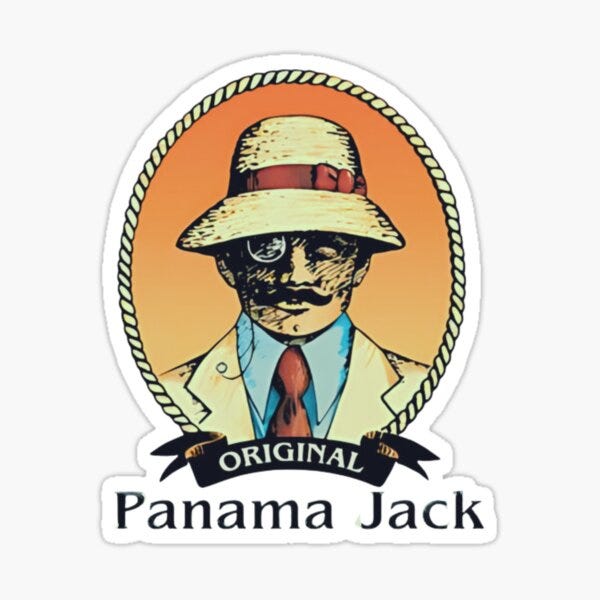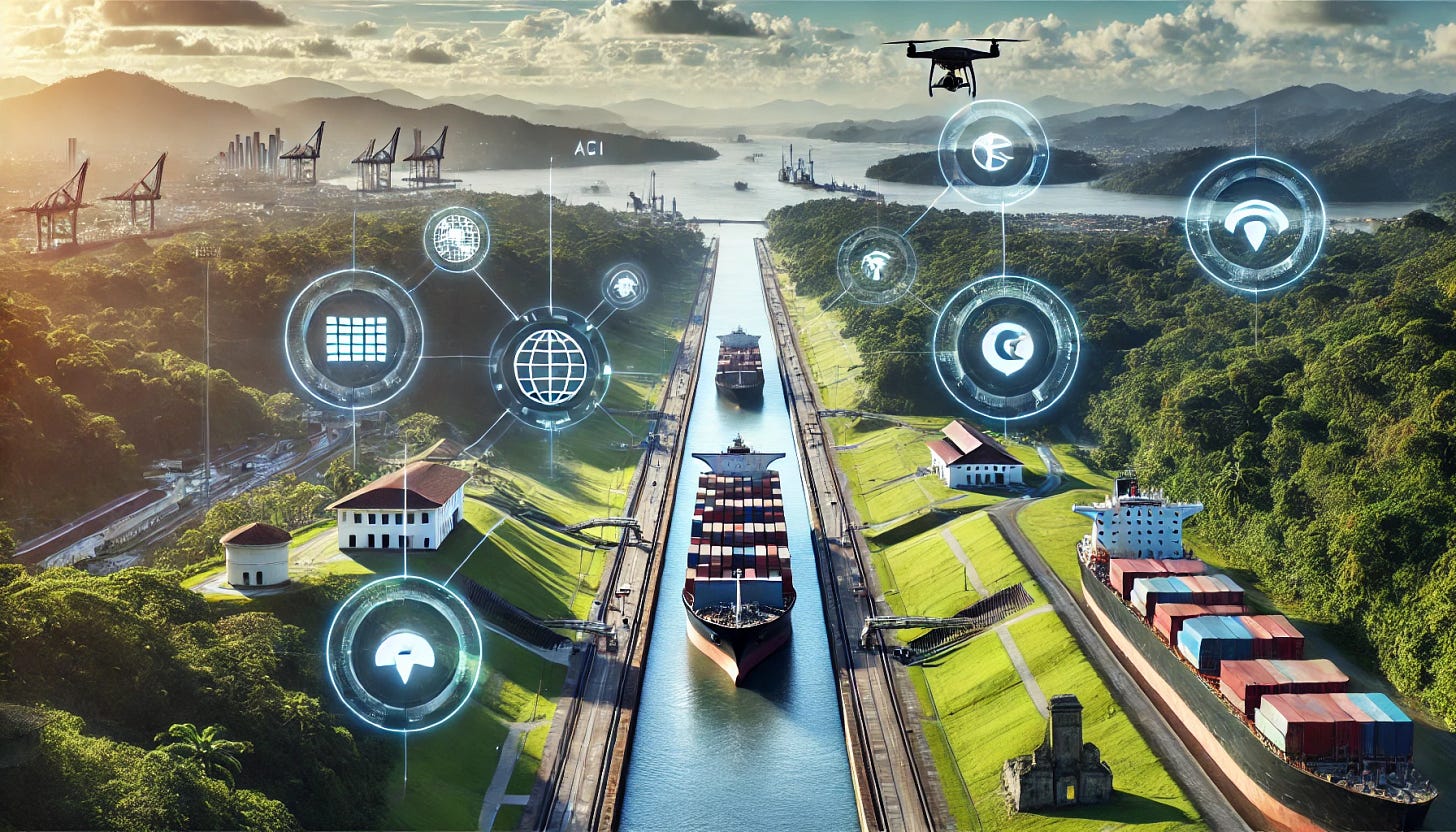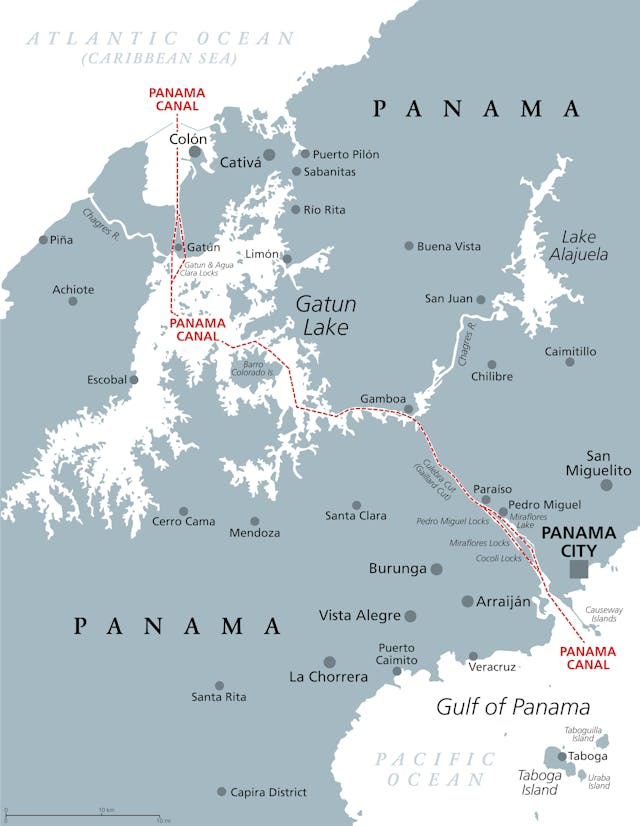The Panama Canal: A Global Gateway and a Strategic Opportunity for Dual-Use Technologies
If you had the chance to strengthen your country.....would you? From Florida with love...
The Panama Canal remains a linchpin of international trade and a potential strategic launchpad for dual-use technology integration. While Panama retains full ownership of the canal(on paper), the increasing role of Hong Kong and Chinese-based companies such as Hutchison Ports and China Communications Construction Company (CCCC) in its port and logistics operations presents new geopolitical considerations(snakeheads?). The United States has an opportunity to engage as a technological and security partner, using the canal to deploy, test, and expand dual-use capabilities through companies and organizations such as Bechtel, IBM, Google, AWS, Palantir, the U.S. Coast Guard, SOUTHCOM, DARPA, DHS, Anduril Industries, AeroVironment, Shield AI, Cyberspatial, Dragos, and Cybereason. By leveraging the Panama Canal in this way, the U.S. can ensure that this vital waterway continues to serve the economic, security, and technological interests of Panama, the U.S., and the global community for generations to come.
The Panama Canal stands as one of the most significant engineering achievements in modern history, now serving over 5% of global maritime trade and almost 40% of US container traffic. Strategically connecting the Atlantic and Pacific Oceans, the canal has played an instrumental role in facilitating global commerce, reducing shipping times, and bolstering economic growth. While originally constructed and operated by the United States, control of the canal was transferred to Panama in 1999. Today, it remains under the jurisdiction of the Panama Canal Authority (ACP); however, key port operations and logistics surrounding the canal are influenced by Hong Kong and Chinese-based companies, notably Hutchison Ports, which operates key container terminals in Panama, and China Communications Construction Company (CCCC), which has been involved in infrastructure projects in the region. With increasing global trade demands, evolving security challenges, and the need for sustained operational efficiency, the United States has a unique opportunity to offer business infrastructure, operational support, and security measures that benefit Panama, the U.S., and the world.
The Role of Dual-Use Technologies
The Panama Canal offers the USA a unique opportunity for advancing dual-use technologies that can serve both civilian industries and military applications. These include innovations in autonomous logistics, AI-driven security, cyber resilience, and advanced maritime surveillance. By positioning the canal as a strategic hub for technological collaboration, the U.S. can foster partnerships that drive global supply chain innovation while simultaneously strengthening national security interests.
How the U.S. Can Expand Dual-Use Technology Through the Canal
Given the longstanding relationship between Panama and the U.S., strategic partnerships can enhance the canal’s efficiency, security, and technological footprint.
Business Infrastructure & Technological Advancements
The U.S. can use the canal as a real-world deployment site for autonomous shipping, AI-driven logistics, and smart infrastructure.
Public-private partnerships (PPPs) can enable American businesses such as Bechtel, General Electric, IBM, and Google to invest in dual-use energy efficiency, cybersecurity, and supply chain innovation.
Emerging technology firms like Palantir, NVIDIA, and Amazon Web Services (AWS) can enhance data analytics, predictive maintenance, and cloud-based logistics solutions for both commercial and defense applications.
Operational Support & Expertise
Joint research programs between MIT, Texas A&M, the University of Florida, The University of Miami, Florida International University(FIU),and the University of Panama can explore dual-use applications in water management, environmental monitoring, and AI-powered transportation.
Security & Geopolitical Stability
U.S. Southern Command (SOUTHCOM) plays a crucial role in securing the Panama Canal and the broader Latin American region. SOUTHCOM can leverage dual-use autonomous security, advanced analytics, and maritime surveillance to enhance situational awareness and response capabilities.
The Panama Canal presents a unique opportunity for collaboration between Federal U.S. agencies and the Department of Defense (DOD), enabling joint innovation in AI-driven security, cyber defense, and unmanned systems. Collaborating through agencies such as DARPA, the National Security Agency (NSA), and the Department of Homeland Security (DHS) can strengthen real-time threat detection and crisis response measures.
Leveraging autonomous technologies across air, land, and sea can enhance surveillance, threat detection, and operational security. Companies like Anduril Industries, AeroVironment, and Shield AI can provide unmanned aerial systems, automated maritime security, and AI-driven monitoring solutions to safeguard the canal against emerging threats.
Emerging cybersecurity firms such as Cyberspatial, Dragos, and Cybereason are redefining offensive and defensive security, providing next-generation solutions to protect the Panama Canal from cyber threats, infrastructure attacks, and digital espionage.
Mutual Benefits for Panama, the U.S., and the World
By utilizing the Panama Canal as a stepping stone for dual-use technology expansion, the U.S. can drive commercial innovation, bolster security, and enhance regional stability.
For Panama:
Economic growth, job creation, enhanced technological capabilities, and improved security.
For the U.S.:
A forward-operating technological hub that strengthens supply chain resilience, defense applications, and strategic security interests.
For the World:
A more reliable global trade artery, increased efficiency in goods movement, and a stronger, interconnected global economy that integrates civilian and military technology advancements.
May God Bless Americas!
Tyler








